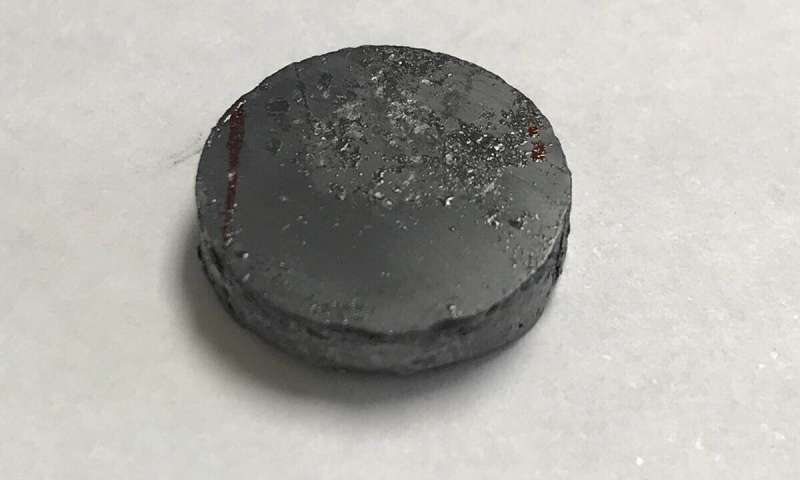Credit: University of Seville
University of Seville researchers led by Professor Francisco Luis Cumbrera, together with colleagues from the University of Zaragoza and CSIC, have found a procedure for producing the phase B6C of boron carbide. This phase had previously been theoretical. This scientific-technological advance will make it possible to provide a cheap, ultra-resistant material for the design of planes, cars and other means of transport. In addition, B6C is also ultra-resistant to radioactivity.
BxC is a family of ceramic materials known as boron carbides. The canonical member (in scientific language, stoichiometric) is B4C. This is a very hard, black solid that remains stable at very high temperatures. The family is large, ranging from B4C to B14C. Depending on the proportion of B (boron) and C (carbon), its physical properties change. B6C is the member of the phase B6C, with six boron atoms to carbon atom, and was believed in theory to be ultra-resistant. Until now, a way to produce it systematically had not been found, nor how to distribute the boron and carbon atoms internally.
The researchers made the material using laser zone floating, which consists of fusion by means of the application of intense laser radiation and then rapid solidification. The idea was proposed by Bibi Malmal Moshtaghion, a researcher trained in Iran and Seville with a Juan de la Cierva contract to work at the University of Zaragoza. Professor Cumbrera's team used X-ray diffraction techniques to characterize the crystallography of the samples obtained and the defects present in them, as well as the possible preferential ordering of the polycrystal grains.
Later, its mechanical properties were determined by both teams. The phase B6C obtained in this way possess a hardness of 52 GPa and a Young modulus of 600 GPa. In comparison, the hardness of diamond is around 45 GPa, although it has a Young modulus of 1050 GPa. "This makes phase B6C the hardest material in nature after diamond and the cubic phase of boron nitride," the researchers write.
More information: Bibi Malmal Moshtaghioun et al. Elusive super-hard B6C accessible through the laser-floating zone method, Scientific Reports (2019). DOI: 10.1038/s41598-019-49985-2
Journal information: Scientific Reports
Provided by University of Seville
























